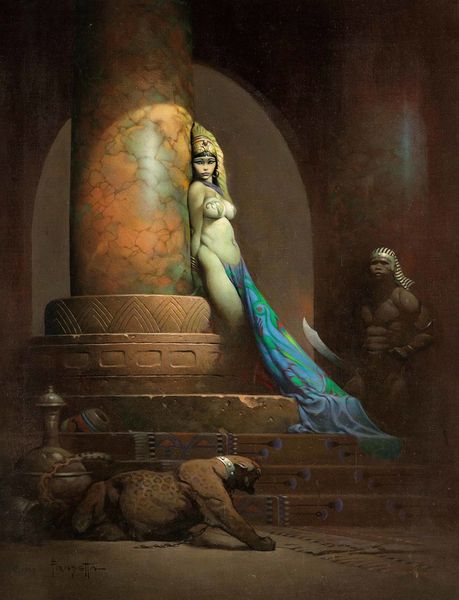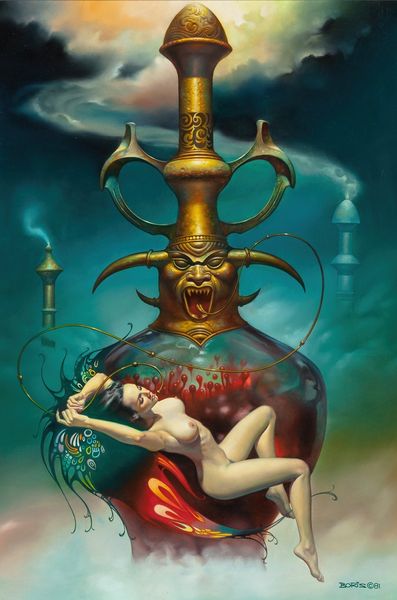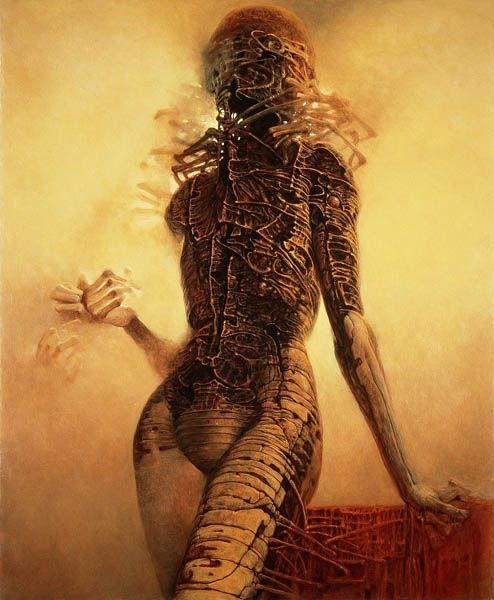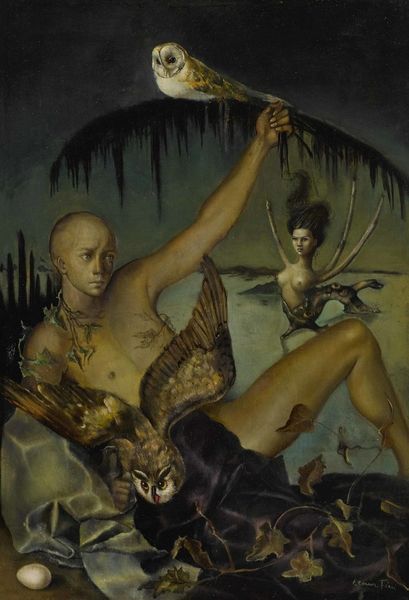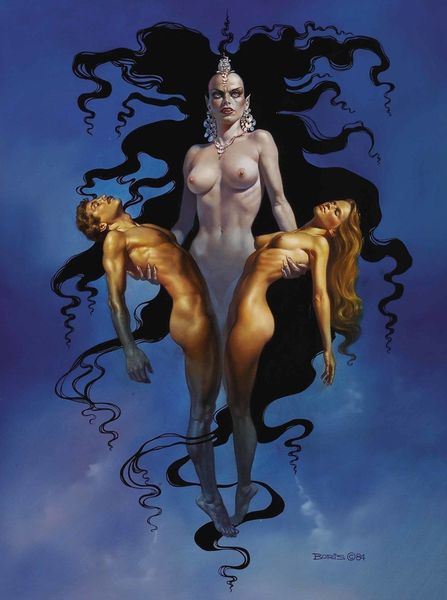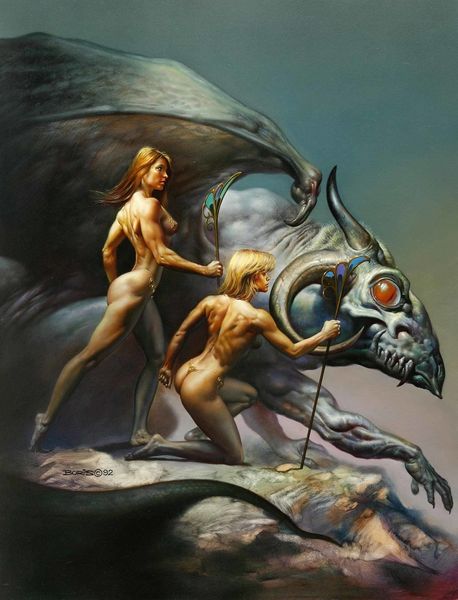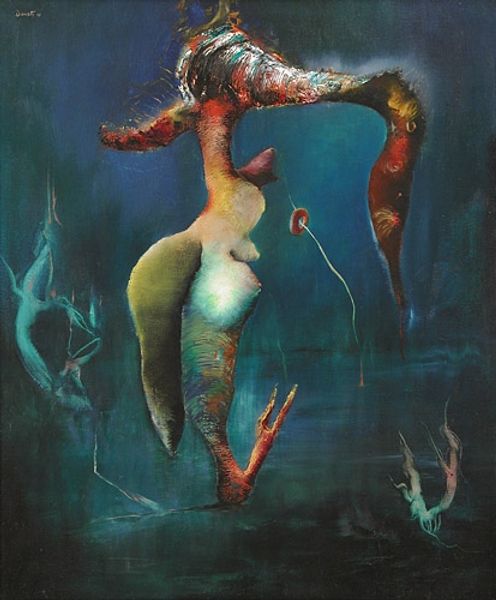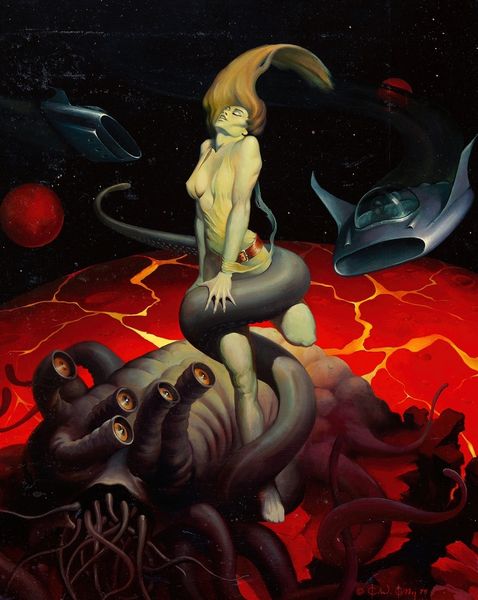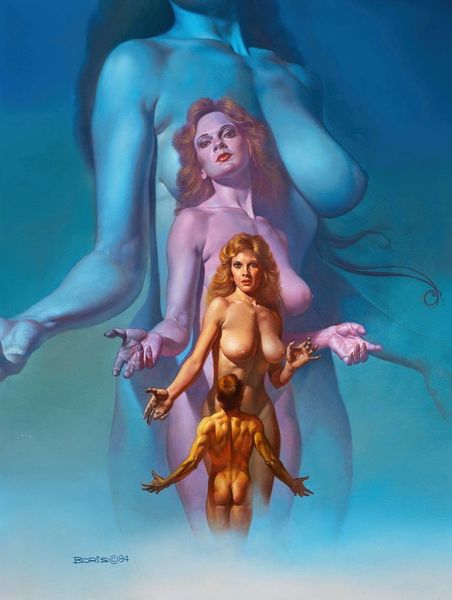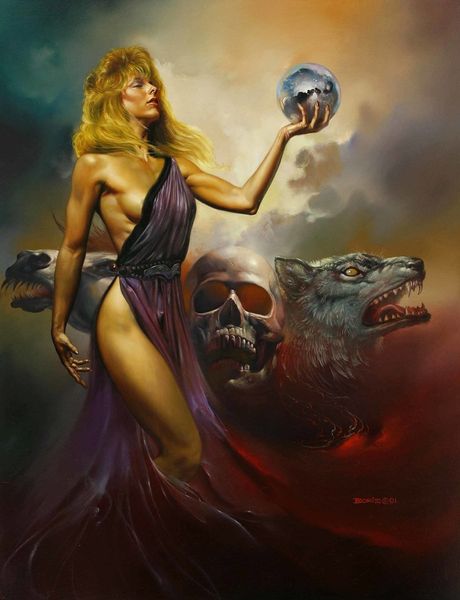
Copyright: Modern Artists: Artvee
Curator: Before us hangs "Thytonese," an oil painting created in 1991 by Boris Vallejo, an artist known for his contributions to the fantasy art genre. Editor: My goodness, what a commanding figure. She’s at once powerful and unsettling; the stark contrast between her luminous skin and the surrounding shadows really grabs your attention. And what is it she’s holding... a skull? Curator: Indeed. It’s this tension between allure and menace that defines much of Vallejo’s work. One must contextualize his position within the broader history of fantasy illustration, where women were often presented as either damsels in distress or wicked temptresses. "Thytonese", and much of his other fantasy art, can be considered a critique of those conventional portrayals. Editor: Yes, I agree; compositionally, the skull juxtaposed with the implied motion of the arm raised—it suggests dominion. But looking at her body—the sinuous, almost serpentine form tapering to the tail, is an uncanny focal point for all this. And how is the tension between beauty and danger achieved visually? It is definitely captivating, I will give him that. Curator: Consider that during this period, the role-playing game culture, fueled by works of Tolkien and Howard, increasingly demanded nuanced character design. So the artist was in dialogue with certain audiences and collectors who valorized empowered heroines, who refused older archetypes. What’s more, eroticism was increasingly foregrounded in art broadly by the late 20th century. Editor: Eroticism indeed—observe the strategically placed seashells that are so... curious, shall we say? But what is the significance of the creatures framing her within the rocky landscape? And all this warm lighting behind the figure? Curator: Think of these monstrous figures that flank her as narrative devices of trials and tribulations that reflect ancient Greek myths or earlier forms of classic monster archetypes, but filtered through a modern sensibility influenced by evolving conceptions of women's agency. I believe it offers insight into shifts in gender dynamics within the broader culture. Editor: Seeing it as a social narrative allows us to look deeper than just at what stands out. I came into this just noticing light, dark, shape, and texture—purely visual language. Thank you for shining some light, pun intended, on this. Curator: Absolutely, it has been my pleasure to provide additional context on this important painting and this noteworthy fantasy artist.
Comments
No comments
Be the first to comment and join the conversation on the ultimate creative platform.
